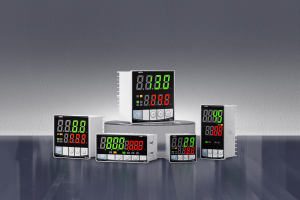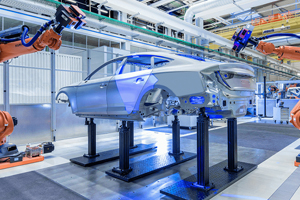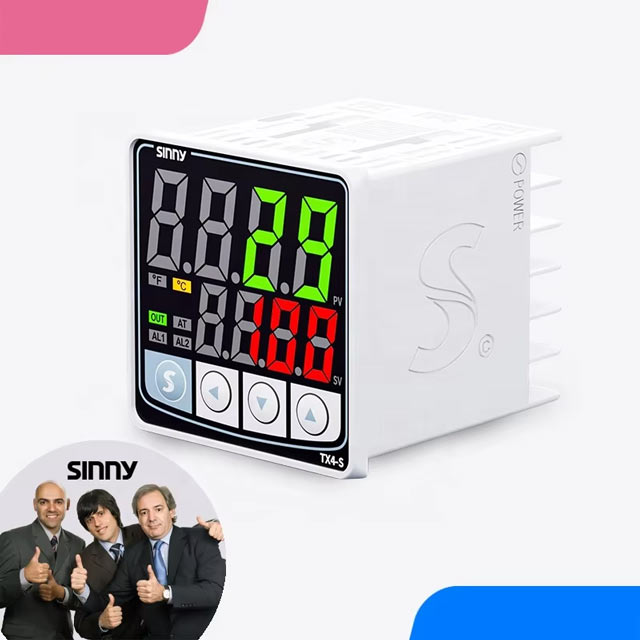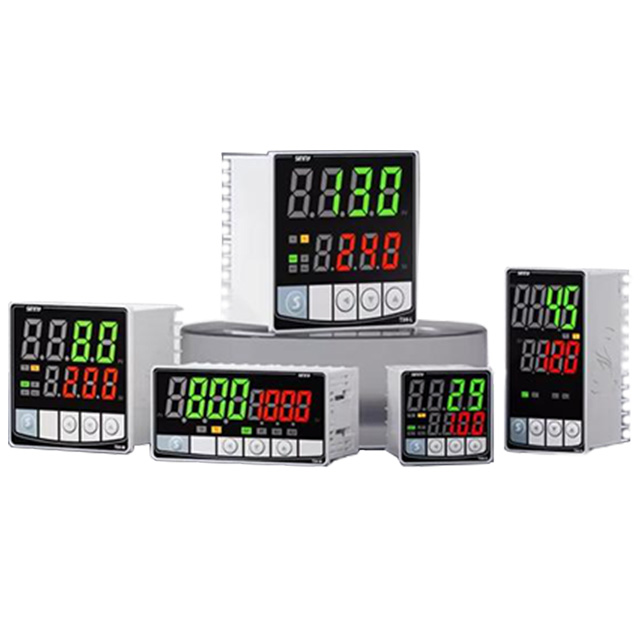DC PID temperature controller
1. The following is a brief introduction to the topic:
The comprehensive guide is designed to give a complete understanding of DC PID Temperature Controllers. The guide will explain their basic principles, their features and their applications. It will also discuss the advantages of each controller. This article will provide the reader with the knowledge necessary to understand the importance, capability, and benefits of using such sophisticated control systems in various contexts.
2. What is DC PID temperature controller?
The DC PID Temperature Controller is a form of feedback system that regulates a process variable (in this case, temperature) by controlling an output device according to the differences between the setpoint desired and actual temperature measured in a DC system. The core effectiveness of these controllers originates from their Proportional-Integral-Derivative (PID) algorithm. The algorithm calculates continuously the corrective actions required to minimise the error, the difference between setpoint and measured temperature, and then applies them to the output – typically a DC heater, DC fan or similar actuator – using solid state switching elements. PID integrates three control actions: proportional, integral, and derivative. The components each contribute to the accuracy and stability of temperature control.
Proportional directly addresses the size of the error. The output is changed in a proportional manner to the magnitude of error. The output signal is stronger when the error magnitude is larger, while a small error produces a weaker signal. The integral (I) is a component that focuses on accumulating past errors. The error is integrated over time to eliminate steady state errors. The system will not fail to achieve the target temperature. Derived (D) predicts errors in the future based on how fast the error rate is changing. This helps reduce oscillations and overshooting around the setpoint, resulting in a faster and more stable convergence to the desired temperature. The DC PID Controller can react to any changes in the process temperature, quickly correct any deviations, and ensure accurate and stable temperature regulation even with DC power.
A DC PID Controller's feedback loop operates in the same way as its AC counterpart, but it adapts itself to DC environments. Temperature sensors measure the process temperature. The measurement is then compared with the setpoint temperature. The controller determines the difference (the setpoint and measurement) The controller produces an output signal based on the error, and PID algorithm. This output signal is typically used to control a solid-state switch, such as a MOSFET (Metal-Oxide-Semiconductor Field-Effect Transistor) or a Solid State Relay (SSR) designed for DC loads, thereby adjusting the power delivered to the heating or cooling element to bring the process temperature back towards the setpoint. DC controllers often require specific components, such as MOSFETs. MOSFETs are highly efficient at switching DC power and can be used instead of relays in AC controllers.
3. DC PID temperature controllers: Key features
The modern DC PID controllers are equipped with several technical features which contribute to the reliability and effectiveness of these devices, as well as their ease of use in DC systems.
The implementation of the PID algorithm, is at the core of the controller. The PID, I and D gain parameters are programmable in most advanced controllers. This allows users to optimize the performance of the controller for different loads or operating conditions. It is important to be able to change these parameters in order for the controllers' stability and minimization of oscillation or overshoot. Advanced controllers may even include autotuning capabilities, which simplify setup by automatically changing the parameters of the controller based on system response.
DC output stage also plays a critical role. DC PID controllers switch DC loads with solid-state components such as MOSFETs and SSRs. They are ideal for DC application because they offer fast switching times (no wear on the mechanical parts), longer lifetimes (no metal to wear out) and lower power losses. It is important that the controller interfaces correctly with both the switching device chosen and the DC load. (e.g. a heating element of a particular wattage or voltage/current ratings for cooling fans). The output stage translates directly the calculated controller adjustments to power changes in the cooling or heating device.
. Verify that the controller you choose is compatible with your application's DC voltage requirements. The controller should also be able to handle DC power frequencies (even though DC power technically does not have a fixed frequency but is based on the operating voltage of the system).
The compatibility of the sensor should also be taken into consideration. DC PID Controllers need to be compatible with DC temperature sensors. Due to the voltage characteristics of thermocouples, they are not as common in DC PID controls. However, some controllers support them. Depending on accuracy and temperature range required, the choice will depend upon cost.
is a user-friendly interface that significantly improves ease of use. Modern controllers have a digital display with a menu system and clear text. Operators can easily adjust the PID parameter, view sensor data, or set the desired temperature. An intuitive interface minimizes user errors and the learning curve.
The feature can be used for data recording and system automation.
Safety features is also important. DC PID controllers are often equipped with essential safety features. They may also include high-low limit switches (which automatically cut off the output when temperatures reach unsafe upper and lower limits) and rugged enclosures to protect users and internal components from potential electrical hazards. This is especially important for DC power. The controllers can also be certified, for example, CE (Conformite Europeenne), UL (Underwriters Laboratory) listing for North America or IECEx for international markets. These certifications indicate compliance with performance and safety standards.
4. Common applications of DC PID temperature controllers
LED Lighting is another important application. DC PID controllers are able to control the temperature both of LED drivers as well as the LEDs. It is important to maintain LED brightness and color consistency. It can control a DC heater element or activate a DC Fan to cool the LED when needed. This ensures optimal performance.
Consumer electronic incorporates DC PID controls, even if they are sometimes internal. Advanced refrigerators and air conditioners are examples of devices that require precise temperature control.
R&D equipment frequently requires DC PID controllers to create stable environments and test the temperature sensitivity for various products or components.
5. Benefits of using a DC-PID controller
The DC PID controller has several advantages. This is especially true in DC power system applications that require precise temperature control.
High Precision is one of the main benefits. PID DC controllers can maintain process temperatures very near the setpoint and often achieve accuracy levels that are suitable for high-demanding applications. The high accuracy of DC PID controllers is essential in applications that can be affected by even minor temperature changes.
stability is another key benefit. PID DC controllers maintain temperatures with minimum fluctuations and ensure consistent operating conditions. Stability is important for sensitive processes, since it prevents deviations or errors.
responsiveness also has a major benefit.
DC PID Controllers are able to optimize the heating and cooling cycle in terms of efficiency. This reduces energy consumption. They minimize energy loss by precisely controlling output and only using energy needed to maintain setpoint temperatures.
The DC PID controllers that we use are reliable and robust. These controllers are made to operate continuously in harsh environments. They can also be used for industrial and laboratory applications. It is essential to maintain uninterrupted processes.
6. What to Look for When Choosing the Best DC PID Temperature Control
It is important to choose the correct DC PID controller for your application in order to achieve optimal performance and compatibility. When evaluating the controller, it is important to consider several key aspects.
first, define requirements for your application. This involves identifying process types (e.g. heating, cooling), temperature ranges required, nature of load (e.g. resistive, inductive or capacitive), as well whether it is a continuous operation, an intermittent one, or cyclical.
Next, check the DC Voltage . Choose a controller that is compatible with your DC voltage requirements. Take into account the characteristics of your power source (e.g. 12VDC or 24VDC) as well as the current drawn by the load. The controller must be able to handle the current draw of the load without failing or overheating.
The selection of sensor also matters. Select the right sensor and the range that is appropriate for your DC system. Take into account the accuracy required, response time and cost. It is important that the controller works with your chosen sensor (e.g. NTC/PTC thermoistors, RTDs, etc.) and can measure within its range.
Configuration of output should also be considered. Choose the appropriate output for DC loads (MOSFasters, SSRs or PWM). Check that the controller interfaces correctly with the selected switching device, and can handle the required power.
Accuracy and Resolution also play a role. The accuracy and precision specified by the controller should match the process' precise requirements. Take into account the resolution required (e.g. 0.1degC in increments).
interface should also be considered. Take into account the display type (LCD/LED), as well as its ease of programming and use. An intuitive interface will reduce the time required for setup and operation.
Safety Certifications also play a role. You should also look for the necessary certifications for your region and application (e.g. UL). The controller will be able to meet safety and performance requirements with these certifications, which enhance the E-E.A.T.
Budget also plays a role. Comparing the performance specs, features and cost of different manufacturers is a good idea. Prioritize reliability and performance over price for applications that are critical. Total cost of ownership should be considered, which includes energy savings potential and required maintenance.
7. Install and Setup Guide
Installation and setup is crucial to the safety and effectiveness of any DC temperature controller. Installation work - especially when DC power systems are involved - should be performed by an electrician with experience in electrical safety. Be sure to disconnect the DC supply from the controller as well as the load before beginning any installation. Follow strict safety procedures when it comes to electrical work. The risks of working with DC systems are high. Incorrect wiring could lead to injury or fire. Consult a professional if you have any questions about the installation.
Installation steps are generally the same:1. Installation of Sensors: Install the temperature sensors (thermistor, RTDA, etc.). In a place that is representative of process temperatures. Make sure it's securely mounted, and protected from physical damage or direct drafts. The sensor wires should be connected to the terminals of the controller in accordance with the wiring diagram provided by the manufacturer.
Wiring Power: Connect DC power to controller input terminals. It is important to ensure that the power supply matches the required voltage (e.g. DC voltage), and frequency (if necessary) as specified in the manual of the controller. Make sure you use terminals and wiring with the appropriate rating. The controller should be grounded according to the local electrical code.
* Connection of the load: Connecting the DC heating or coolant loads to the output terminals designated on the controller. Follow the wiring instructions of your manufacturer. Make sure the output is compatible (e.g. resistive load with MOSFETs/SSRs or DC fan/heater).
* Checks Final: Verify that all connections are tight and in order. Check that all wiring is properly and securely insulated. Position the controller in an appropriate locati0n that has adequate ventilation.
Basic Installation Procedure: Turn on the controller, and then navigate to main menu options or the setup options.
* Setpoint : Adjust desired target temperature using keypad or knob.
* Sensor configuration: Selecting the type of sensor to be connected (e.g. NTC thermistor or PT1000)
* Calibration: Some controllers may require sensor calibration. Please follow the directions in the manual.
Configuration of Output: Select the desired output (e.g. MOSFETs, SSRs, PWM, etc.) as well as any required limits.
* Re-check settings: Verify that all parameters are configured correctly.
- PID temperature controllers explained: their features, functions, and applications
- The Ultimate Guide for 240V Temperature Control: Features, Benefits & Applications























